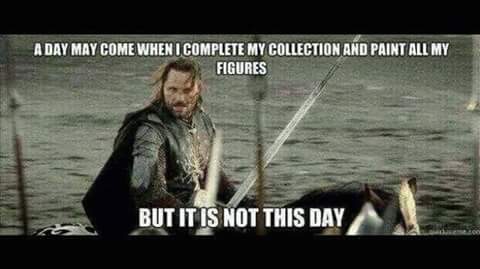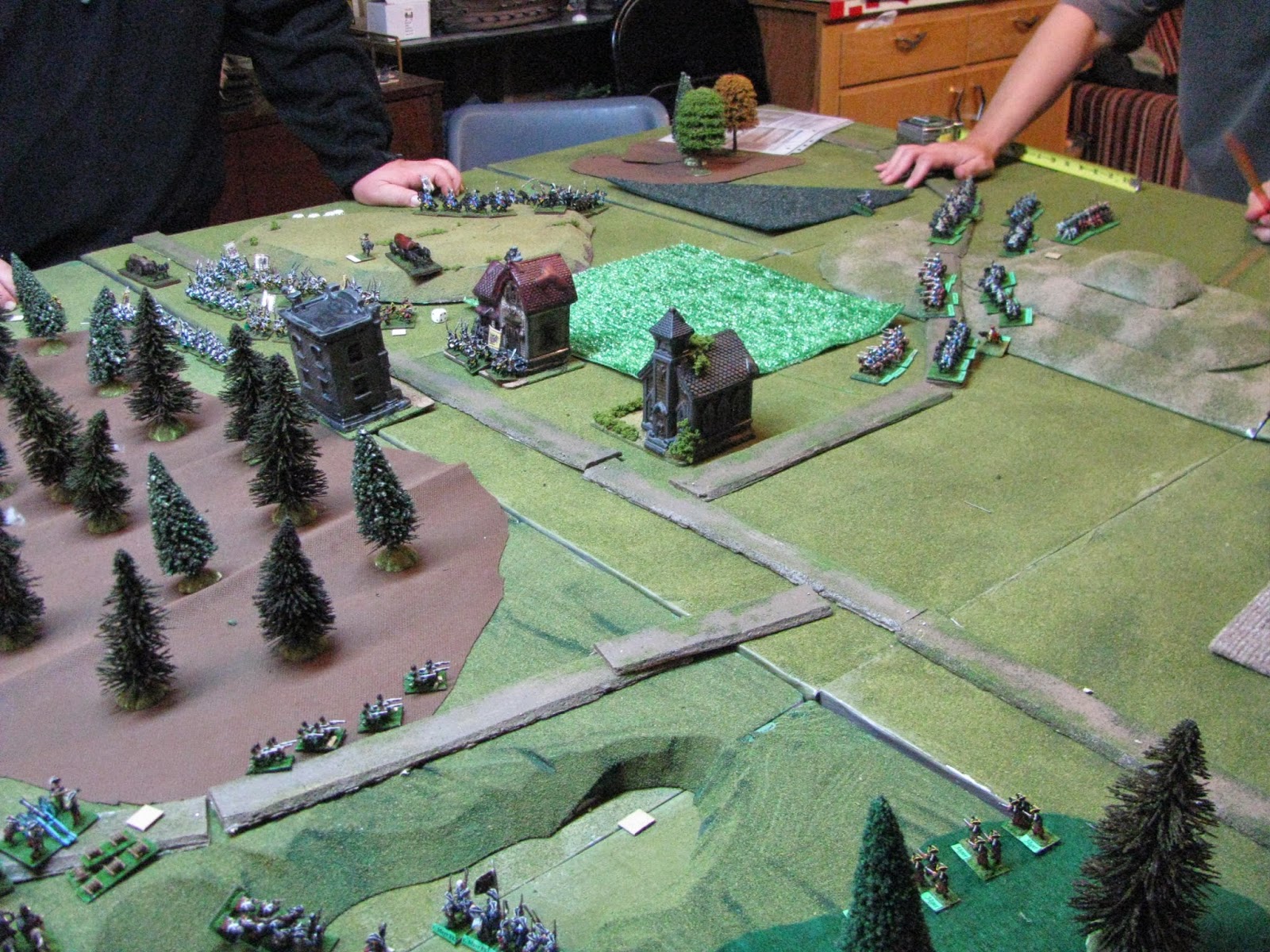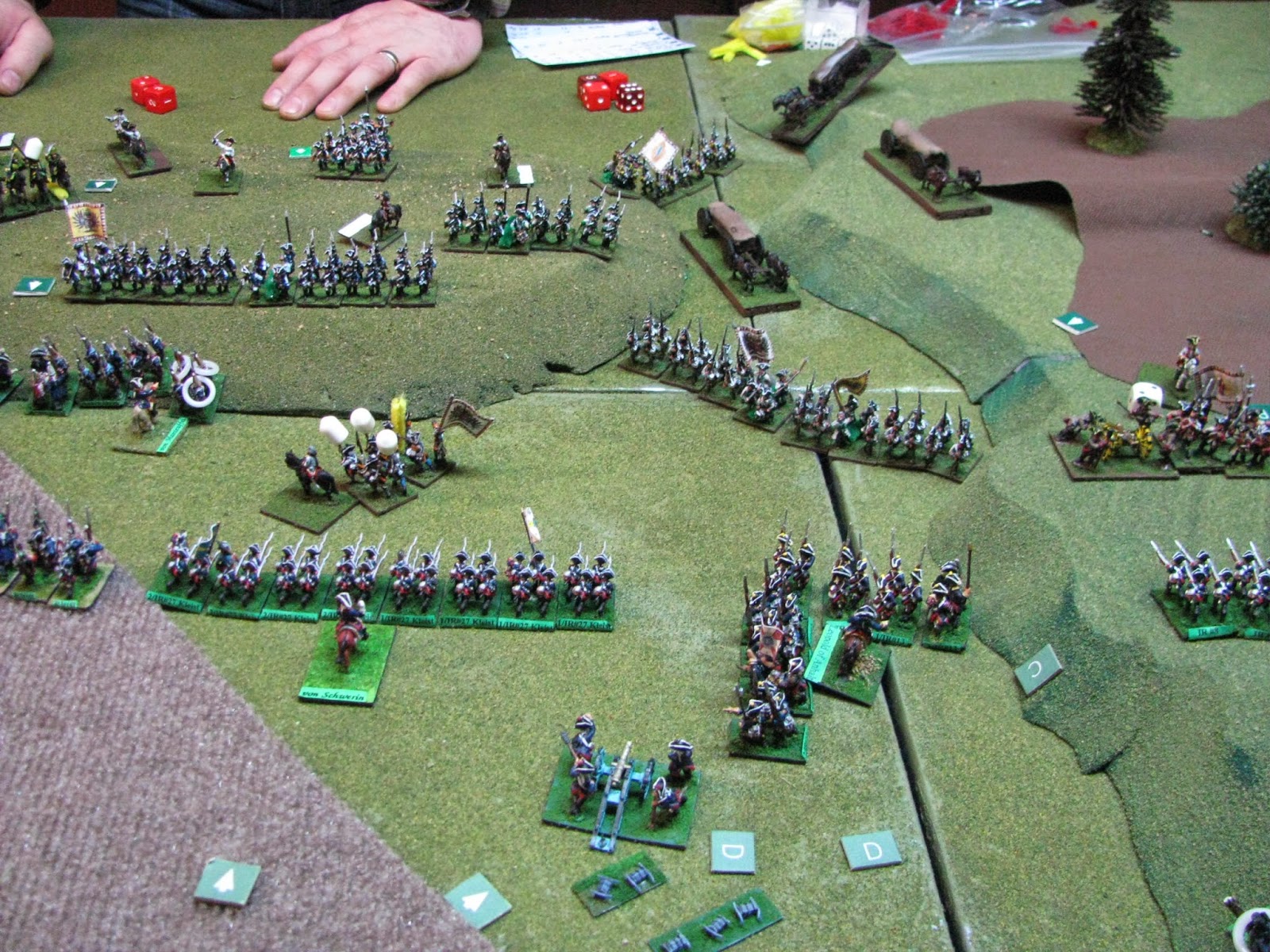Needing lighter fare than the SYW hammerings, and with only three players available for the game, it was decided to go early-war with Flames of War. Our resident "Tank-no-phobe" had a Polish infantry company that needed table time, and we have Germans in abundance. Or so I thought.
The mission, appropriately enough was "surrounded." So the Poles, Todd and I, started with one platoon in immediate ambush and the rest gone to ground and dug in. Points were 1420 because that was the max the Poles could field, albeit with some imagination. There was no Polish artillery models available so we reverted back to 1st(?) edition to allow for off-table artillery. They had a 105 and 155mm battery with one spotter for each. As it turned out we very much missed having the direct-fire option. For the Poles had no anti-tank guns nor even a single anti-tank rifle. Not that they historically had many.
Then the Germans hit the table. All armor, all the time. That was the force built, so it had Panzer Mk.Is, Mk.IIs, MkIII, and Mk.IVs with a trio of armored cars for recon. We had lots of Fearless-Trained infantry, HMGs and even 5 Vickers 6-ton "tanks." But when all the German armor appeared I thought to myself, "about three turns." As an aside, I was surprised to find the Poles rated Trained. I thought the conflicts against the Soviets, ending in 1921 would have given them cadres of experienced men, especially when the Germans who had even less experience are Veteran across the board. Perhaps it is meant to increase the likelihood of a historic result?

The river is impassible except at the bridge and the fields and hedges give bogging chances. Panzer IIs, IIIs and the armored cars are here. What about the trees you may ask? When I arrived I said, "It never snows in September!" (An excellent book on Market Garden BTW) It was explained it was in honor of the first Wisconsin snow-falls forecast.
The Mk.IVs with their short-barreled 75mm guns and more light tanks are on the other side of the river. All our forces are dug-in on the ridge except for an independent platoon of machine-guns.
The German advance is swift and largely without incident.
The main effort, in terms of numbers, was slightly inconvenienced by artillery fire and some bogging, but mostly rolled on.
The Poles held their fire, but the Germans moved into sighting range and prepared to assault.
To add to the Polish woes we failed one turn to get artillery to land and when it did could rarely achieve more than a bail-out despite good numbers against their top armor.
The Mk.IVs assault the defenders of an objective. The Poles manage to bail one tank, but nothing more, while the Germans did max damage almost every round. Finally the remnants of the Polish infantry had to break off.
Elsewhere even the lowly Mk.IIs were able to over-run Polish positions while the Vickers tanks, though unhurt, had also been unable to hurt any Germans.
So at the end of turn three we called it. Lots of clean-up to do as the Germans had many nasty bits to pull out of their treads. If we had the guns on-table it could have been much different but hey, it was even points so it had to be a fair fight. Nicht wahr? So for us, live and learn. Any day gaming with friends is a good day.



















